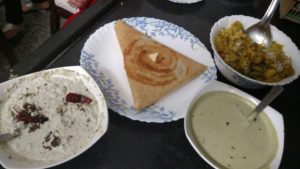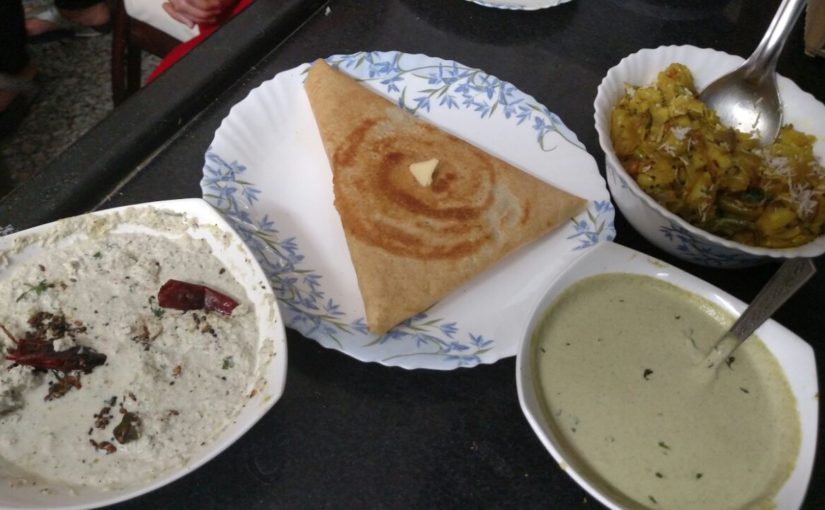If there is one thing India is known for, it is food. However, most people’s knowledge of Indian food is limited to curry and a lot of spices. Would you seriously eat the same thing everyday? I didn’t think so, and luckily there are countless other mouthwatering dishes (both vegetarian and non-vegetarian) to choose from.

I would also like to point out that they are not all “spicy.” There are flavorful dishes on the whole spectrum of heat tolerance that merit exploration. As a foodie, I dread the day I will leave and not be able to indulge in India’s food on a regular basis. Thankfully, not only does my assistant program coordinator share my love for food, but she is more than willing to teach us how to make some traditional Indian dishes.
After a long day of studying for our final exams we were in need of nourishment, so to stave off the hunger we first made papri chaat a popular street food consisting of crackers topped with potato, onion, mint chutney and various other toppings. Different variations abound, but we made two different forms: a “dry” form, which contained no sauces apart from the mint chutney, and a “wet” form which contained yogurt and tamarind chutney as a sauce over top. Our hunger temporarily held at bay, we turned next to the main course.
Just as Texas is known for its barbecue and Chicago for its deep-dish pizza, south India has its own unique dishes, dosa being one of them. Dosa is a thin, crispy bread made from rice batter fermented overnight and eaten with chutneys (a variety of sauces or dips eaten all over India), masala and/or sambar (a lentil based vegetable soup). There are many different kinds of dosa, but we decided to make the popular masala dosa.
My assistant program coordinator started the batter before we arrived for our cooking lesson, but because we had to wait for the thick cast iron slab to heat up before we could make the dosas, we started with the flavorful potato and onion accompaniment called masala.
I would like to point out that the word masala is used in many different ways — it can denote a spice, or that a dish is spicy, in addition to referring to the filling we created for the dosas.
Having finished the masala, we whipped up mint peanut and coconut chutneys in a food processor before starting to cook the dosas. Dosas are created much the same as crepes, where the batter in poured on the surface and then spread out thin with a utensil; the difference is that dosas become crispy instead of staying soft.
We finished our meal with my personal favorite — kheer. Kheer has many variations as well, but in my experience all are delicious. It may have something to do with my undying love for tapioca and the fact that kheer is similar in many ways as it has a milk and sugar base.
Food is a great way to connect with a culture as well as people. The possibilities for exploration in India are endless. Sights, food, clothing, festivals — they all take you on a journey of personal discovery and appreciation. Wherever you are, don’t forget to keep exploring.
